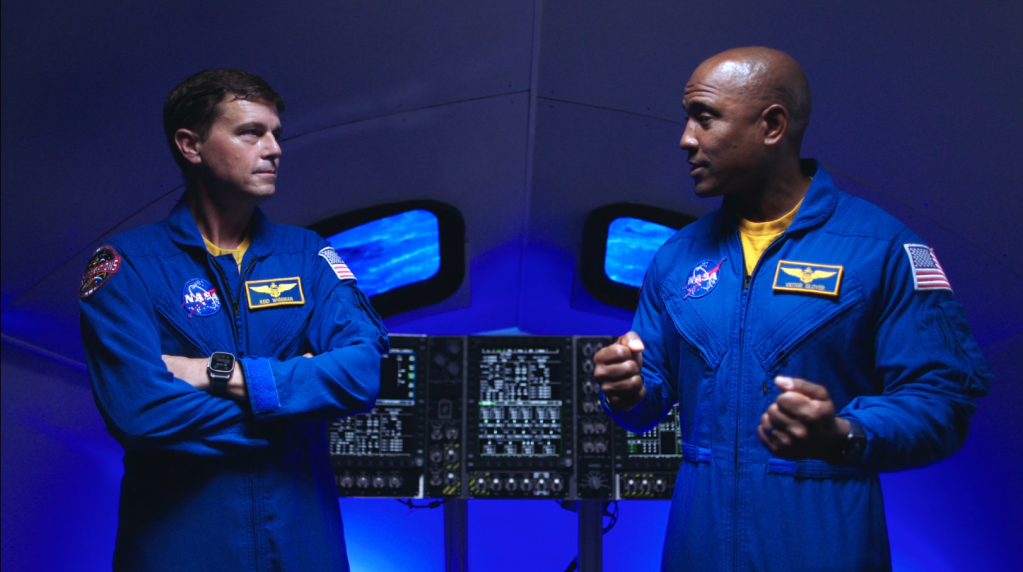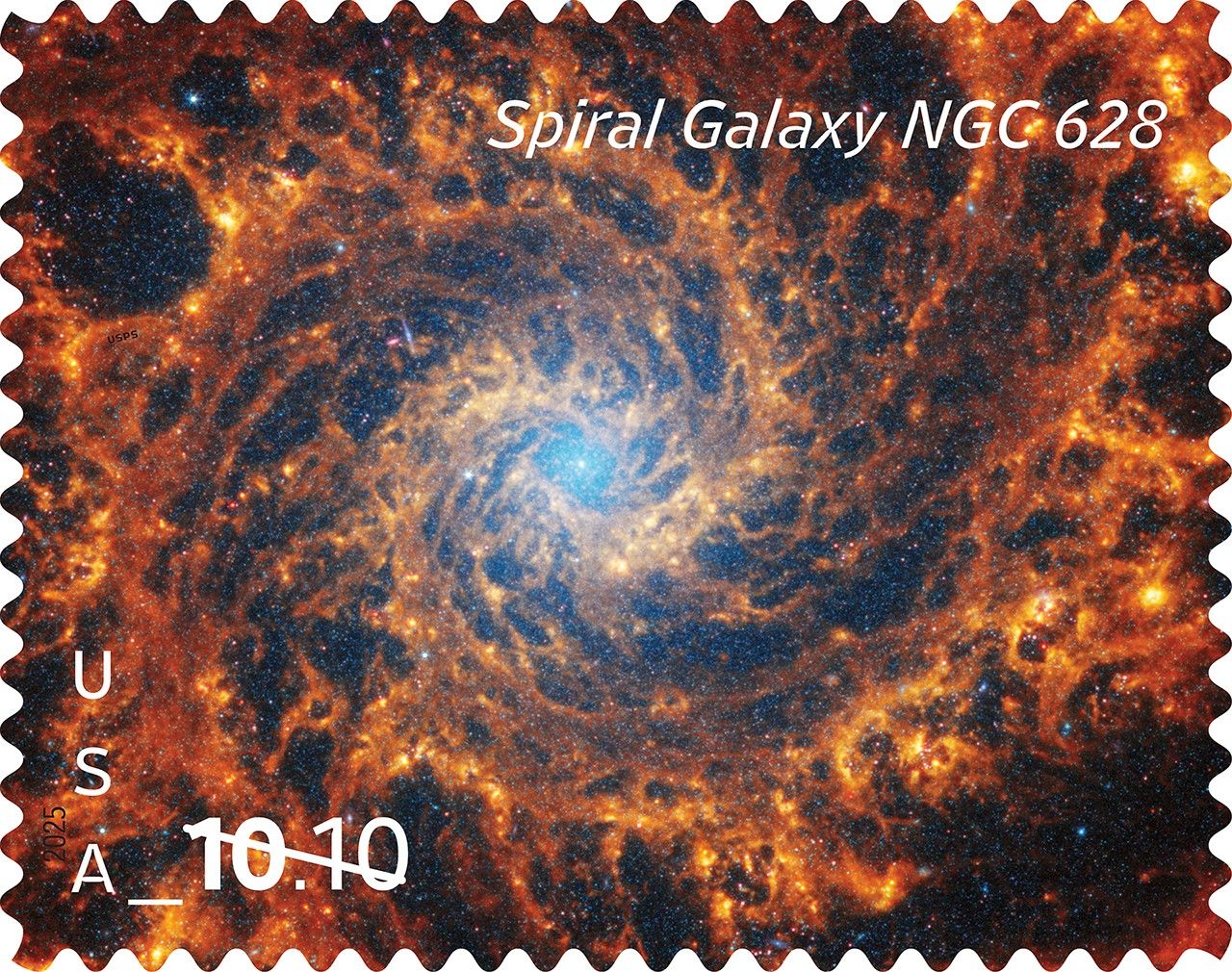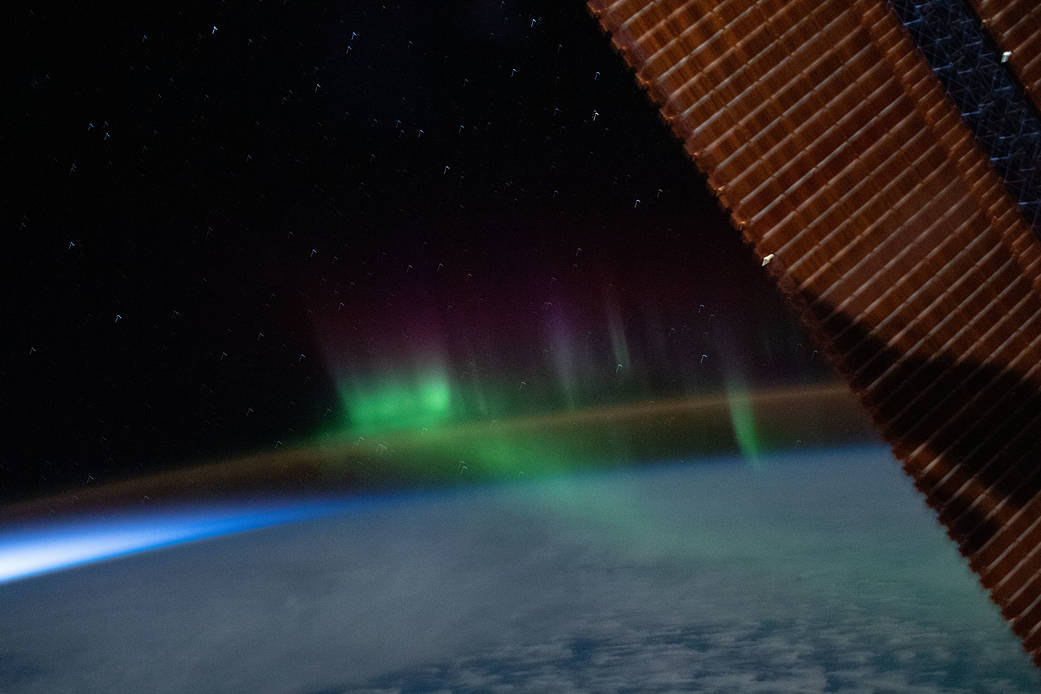Like a wisp of electric green smoke, the aurora australis seemingly intersects with the Earth’s airglow as the International Space Station orbited above the Indian Ocean halfway between Australia and Antarctica.
Ever-shifting displays of colored ribbons, curtains, rays, and spots, auroras are most visible near the North (aurora borealis) and South (aurora australis) Poles as charged particles (ions) streaming from the Sun (the solar wind) interact with Earth’s magnetic field.
Auroras happen when ions in the solar wind collide with atoms of oxygen and nitrogen in the upper atmosphere. The atoms are excited by these collisions, and they typically emit light as they return to their original energy level. The light creates the aurora that we see. The most commonly observed color of aurora is green.
Image Credit: NASA


























